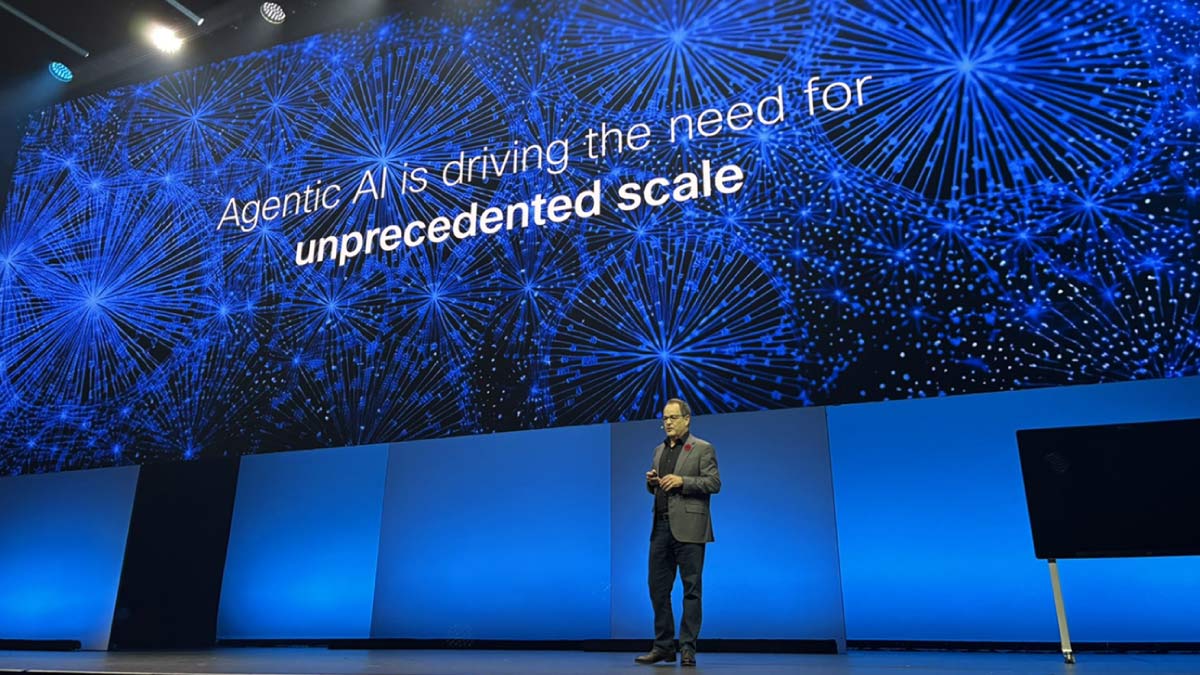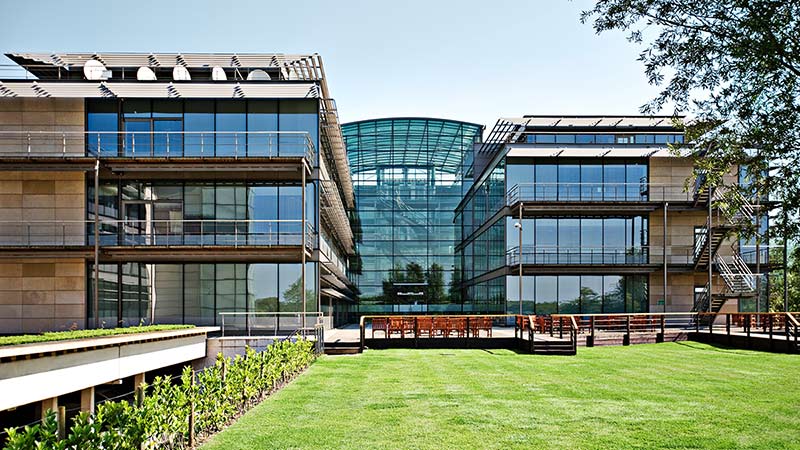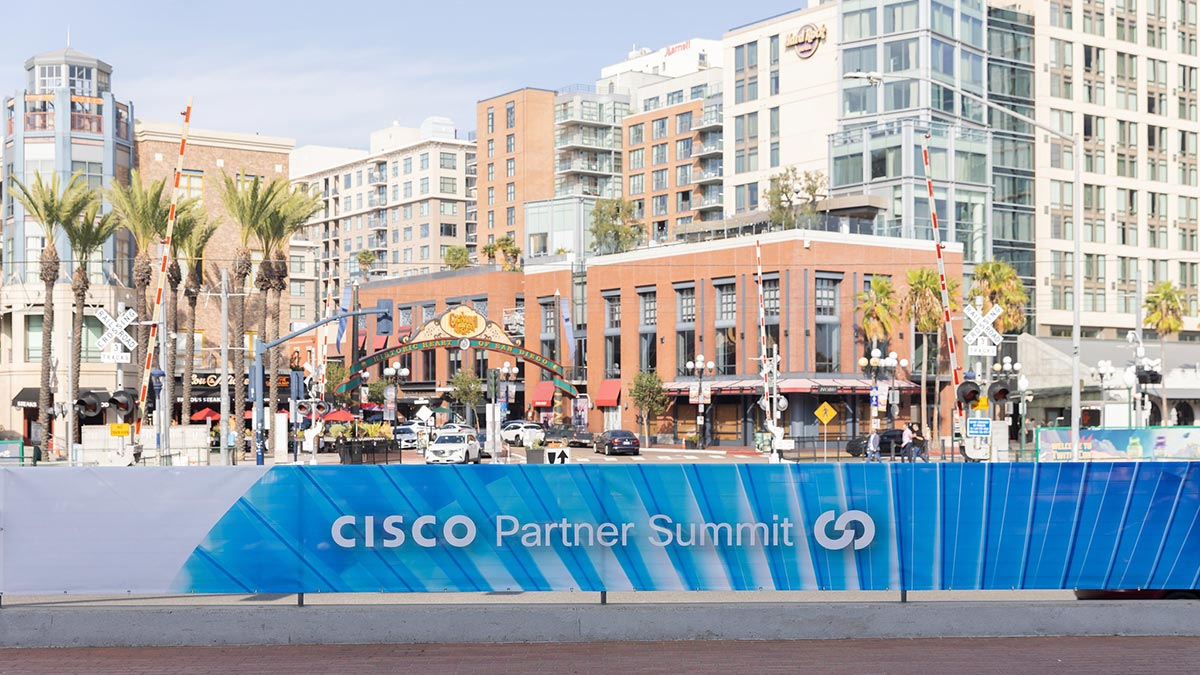When AI isn’t hogging headlines, it’s threatening to clog networks.
That’s because most networks are not prepared for the explosive demands of artificial intelligence and machine learning.
With its groundbreaking Silicon One chip, however, Cisco offers a solution that’s powerful, scalable, flexible, energy efficient, and cost effective — while future proofing organizations against the explosive demands of artificial intelligence and machine learning.
This was the subject of a recent Tech Trends webinar: Cisco Silicon One: Convergence Without Compromise and the Rise of AI. Moderated by Pierre Ferragu of New Street Research, it featured Rakesh Chopra, a fellow in Cisco’s Common Hardware Group; and Eyal Dagan, executive vice president of the Common Hardware Group.
As Ferragu exclaimed, “it’s an exciting time to be in networking!” And Chopra shared how Cisco’s $1 billion investment in Silicon One has driven a big part of that excitement — for starters, in how it enables teams to converge their networks, cutting complexity and cost with one highly flexible infrastructure.
“There’s about 20 different silicon architectures that exist in the industry today,” Chopra explained, “But our goal at Cisco is not to be the 21st architecture. We want to be the one architecture across the network. As opposed to building unique architectures out of those unique requirements, we build unique devices.”
Good for business, good for the planet
Aside from flexibility and simplicity, Silicon One wins on performance and efficiency.
“We enable our customers to make the best choices for themselves,” Chopra said. “But all of that wouldn't matter at the end of the day if we couldn't move the needle in terms of performance. We’ve created simulations of 2048 GPU’s talking to each other. What we see is that by using our more advanced techniques, like enhanced ethernet or fully scheduled fabric, we can shrink the job completion time by almost a factor of 2. That means that our network can be two times more efficient built with Silicon One than with a generic ethernet network.”
At the same time, Silicon One is setting new standards for energy usage and sustainability. That’s a critical advantage at a time when data centers, already notoriously power hungry, contend with the sharp rise of AI and machine learning.
“The most recent design that we've released in the Silicon One family is called the Cisco Silicon One G200,” Chopra said. “There is a huge amount of intelligence in that device, which makes it the optimal AI switch for job completion time. It has ultra-low latency and ultra-high performance. And its twice as power efficient as our previous generation device.”
Energy efficiency is also driven by the networking simplicity enabled by Silicon One.
“You can build a network with 50 percent less optics,” Chopra continued, “40 percent less switches, and remove an entire layer of networking. What that translates to is for a single AI/ML cluster, you can save a megawatt of power within that networking infrastructure. It's a very, very significant mover in terms of building AI/ML networks.”
For Chopra, energy savings are not just about bringing greater efficiency to Cisco customers (as important as that is). He believes it is nothing less than a moral imperative.
“Our planet can only sustain so much,” he said, “so this creates what I like to call a perfect tricotomy of a business imperative, a technology imperative, and a moral imperative to solve these problems. And what's really quite interesting about Silicon One is that through technology, we can actually deliver sustainability.”
A rapidly expanding market
Again, Silicon One is all about flexibility. And that extends to how customers can access this next-generation networking power.
“We offer our technology in multiple different business models,” Chopra said. “We're erasing the boundaries that have existed between merchant and custom. You can buy our Silicon directly. You can buy white boxes from Cisco. You can buy full systems from Cisco. And we created a series of new technologies that allow us to play this game different than
anybody else. At the end of the day, this all just really translate to us being able to offer our customers a better and easier to maintain network.”
As Dagan added, this represents an opportunity for Cisco to penetrate new markets and offer a much wider value proposition, across the three ways in which organizations consume network infrastructure: silicon, white boxes, and full systems using branded boxes.
“We built one architecture to serve all those models and to serve all those market segments,” Dagan clarified, “starting from campus access, going to the service provider, going to the web scalers and today, even meeting the demands of AI. The common wisdom was that it cannot happen. But we came up with an architecture that we believe is going to serve it all.”
As for the size of those markets, Dagan responded to a question from Ferragu on the total addressable market (TAM) for data center and AI with a figure from Cisco’s last earnings report.
“It's a great question,” Dagan said. “The TAM for AI networking, which is the backend network, we stated in the last the earning results is $10 billion by calendar year 2027. And I must say, we see that energy in the field. Every customer that we are talking with, which is mainly web scalers, are talking about one thing: the AI network that they’re going to build. Some are experimenting, some are deploying, but they are all in discussions about AI.”
In a follow-up question, Dagan elaborated further, predicting that the TAM estimate could actually be conservative.
“If you ask me, is it true?” he said, “is it going to be a market of at least $10 billion? Yes, I think it's true. Because when I look at that both top down and bottom up, we're talking about switches in different form factors — branded white boxes or silicone. But we are also discussing the optics. Sometimes people forget that optics is to some degree even bigger than the switching or the silicone itself.”
Moreover, the potential market is not limited to web scalers.
“We’re hugely committed to the web scalers,” Chopra said, “but Cisco has very deep relationships with enterprise-based customers. And although the scale of those networks might not be as large as they are on web scale, there's many, many more customers. So, the end result is a huge market opportunity in terms of enterprise.”
In closing, Chopra summed up the overarching value proposition presented by Silicon One and Cisco’s related networking innovations.
“We’re the only company with all of the technology — between silicon, hardware, optics, and software,” he said. “And that allows us to innovate across these technology boundaries. And we’re the only company that has all of the business models to offer. That allows us to work with our customers, and meet them where they want to be met, offering them choice and flexibility.”




